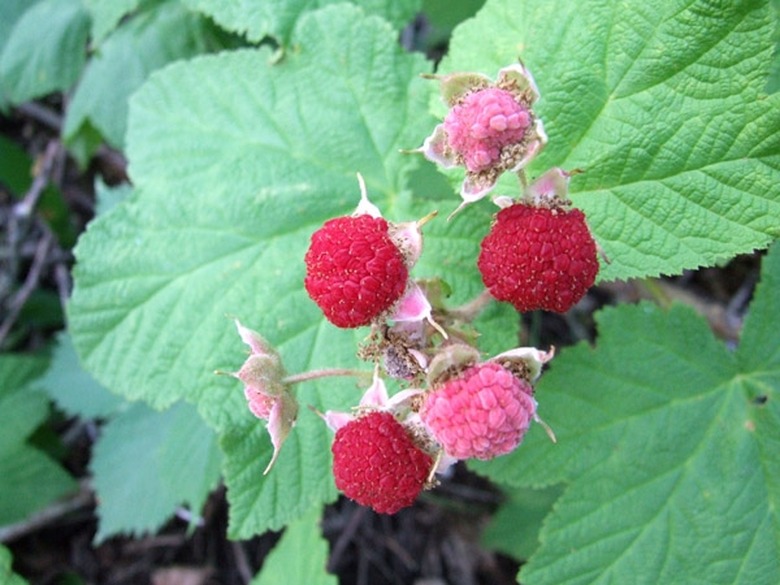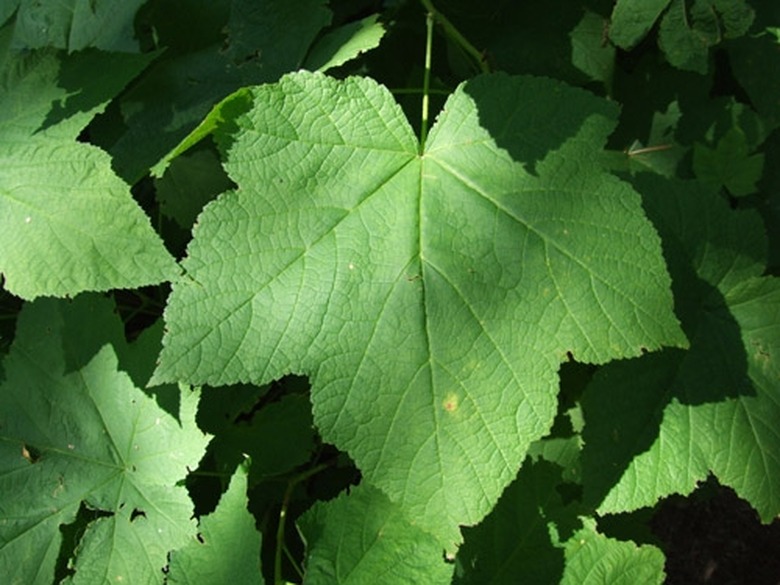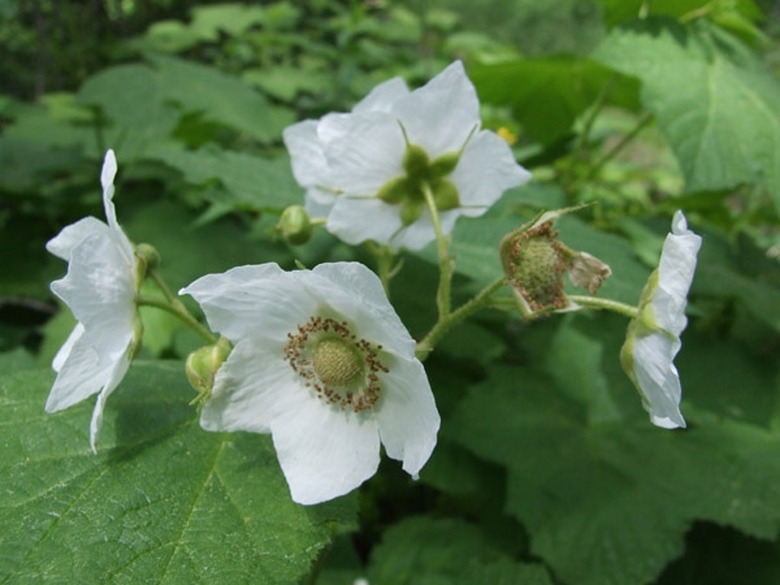How To Identify Thimbleberries In The Wild
Thimbleberries, also known as large-flowering raspberries, salmonberries, or Rubus parviflorus, are a common understory plant in mixed deciduous forests. Their distribution ranges across western and northern North America, throughout most states and provinces west of the Rockies and into the Great Lakes region. The red berries have a sweet-tart and slightly spicy flavor and are excellent for eating out of hand or for making wine, pie or jam.
Step 1
Before you try to identify the plant, take a look around you. Thimbleberries grow in sunny patches of young, mixed deciduous forests, or in areas that have been recently disturbed by fire or logging. They do not like deep shade or open fields and are rare in mature forests.
Step 2
Now, examine the plant. Thimbleberries grow on thornless, woody stems that are two to three feet tall. The stems branch often and may grown in thick, spreading tangles.
Step 3
Take a look at the leaves. Thimbleberry leaves are very large, eight inches or more across and palmate, or hand-shaped. They somewhat resemble maple leaves. The leaf edge is appears slightly toothed or scalloped.
Step 4
If it is early summer, look for flowers. Thimbleberry flowers are usually white, although they are sometimes pink or lavender. They have five white petals that appear to be very flimsy, as if they are constructed of tissue paper, and a domed greenish white center. This domed center is what will become the fruit.
Step 5
Watch for the fruit later in the summer or into early autumn, depending on the climate and weather. Ripe thimbleberries are a deep red, and resemble raspberries in shape and structure. The berries (and flowers) often grow in small clumps of three to eight berries, although usually only one or two will be ripe at any given time. Thimbleberries are very fragile, and the ripe fruit may fall apart in your hand or stain your fingers red.
Warning
Many other red fruits grow on small bushes in deciduous forest. Some of them, like raspberries, are edible, while others, such as baneberries, are not. Always make sure you are absolutely certain of your identification before eating any wild foods. Consult at least two reputable field guides or a trained expert, and when in doubt, do not eat the fruit.
Cite This Article
MLA
Almond, Heidi. "How To Identify Thimbleberries In The Wild" sciencing.com, https://www.sciencing.com/identify-thimbleberries-wild-4500613/. 22 November 2019.
APA
Almond, Heidi. (2019, November 22). How To Identify Thimbleberries In The Wild. sciencing.com. Retrieved from https://www.sciencing.com/identify-thimbleberries-wild-4500613/
Chicago
Almond, Heidi. How To Identify Thimbleberries In The Wild last modified March 24, 2022. https://www.sciencing.com/identify-thimbleberries-wild-4500613/


